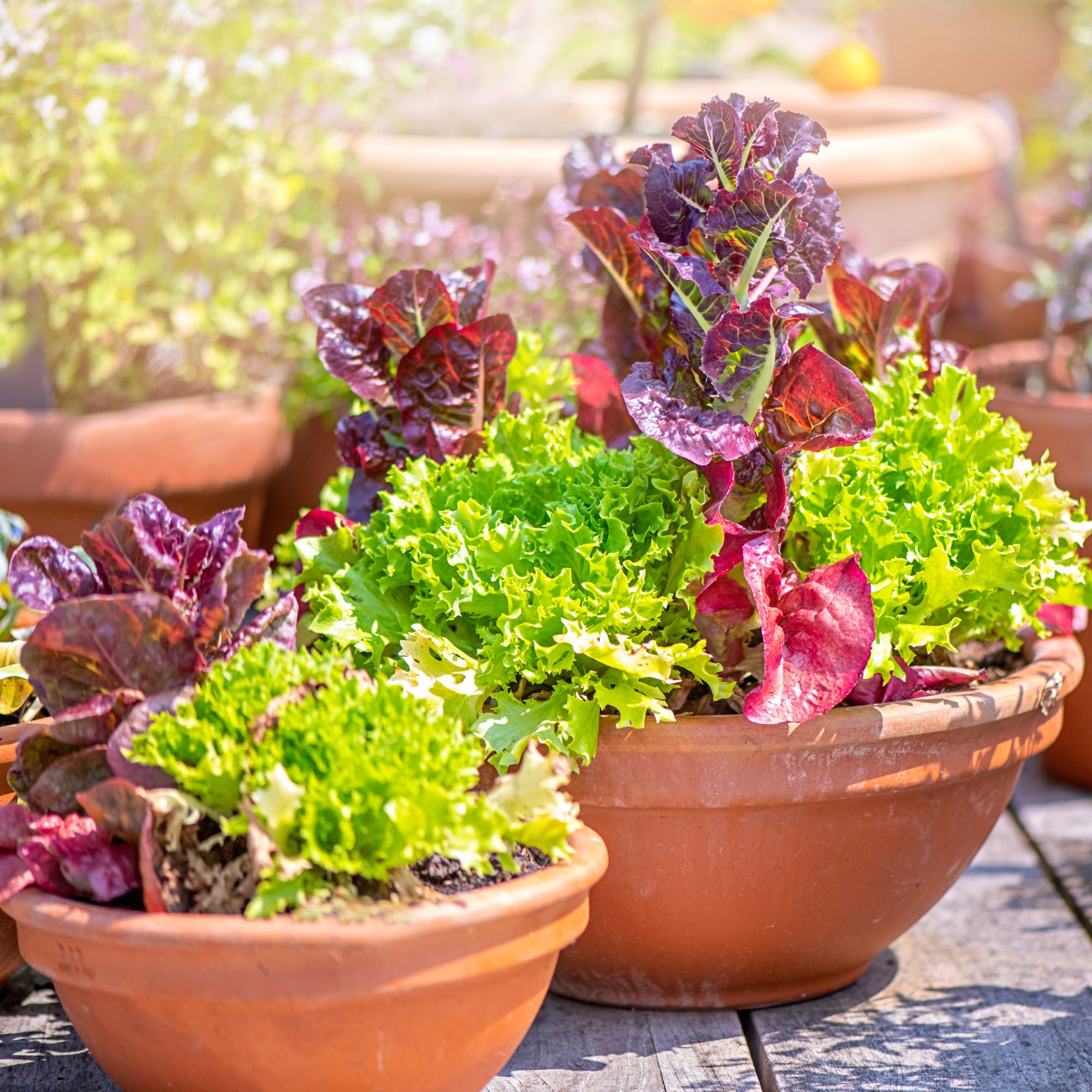
An absolute summer staple, learning how to grow lettuce is a no-brainer for any gardener – not least of all because it means you can stop frittering away your hard-earned cash on those supermarket salad bags that wilt the minute you get them home.
Whether you want to deck out your BBQ goodies (what burger is complete without a froth of green lettuce?) or use it to create show-stopping salads, you'll be pleased to know that lettuce is one of the very easiest vegetables to grow.
It is also, too, a great way to tap into this year's big purple vegetables GYO trend – depending on which variety you decide to plump for. And, even better, it's one of those oh-so-versatile vegetables you can grow in pots, too.
How to grow lettuce
'It doesn't matter if you live in a flat with a balcony garden, or have a large outdoor space, you’ll always be able to grow lettuce,' promises Craig Wilson, co-founder, director and in-house gardening expert at Gardeners Dream.
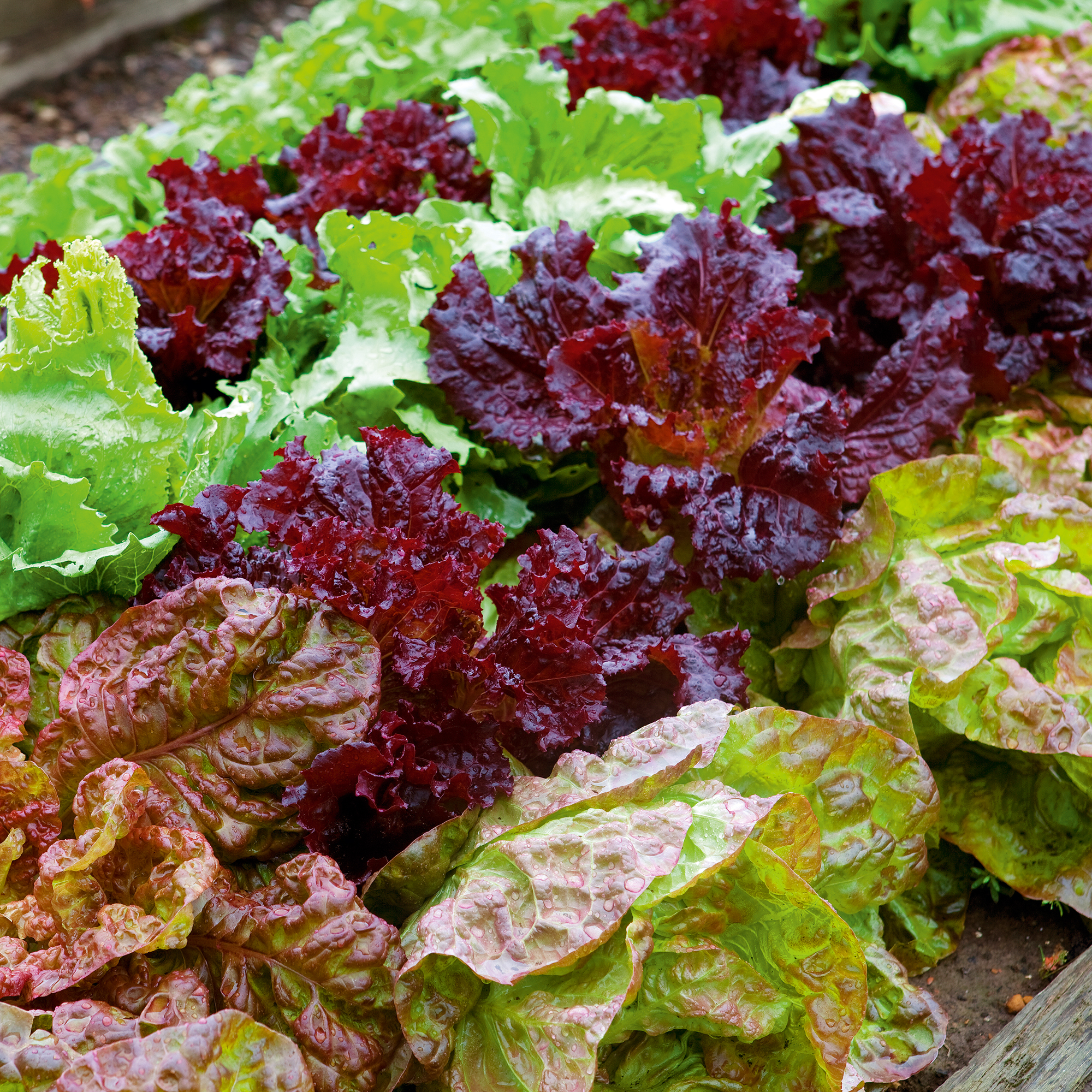
Keen to get started? Here's everything you need to know, then, about how to grow lettuce like a true gardening pro.
What you will need
Now, before we dive into the wonderful world of gardening equipment, it's worth remembering that the word 'lettuce' is an all-encompassing one.
'There are various types of lettuce seed, including cut-and-come-again salad leaf mixes that can simply be grown as leaves, cut when ready and allowed to grow back again,' says Morris Hankinson, director of Hopes Grove Nurseries.
'You can also get a round head lettuce, a crinkly red lettuce and even a lettuce that can be grown over winter such as Winter Gem or Winter Density,' he continues.
'And don't forget about the Outredgeous, aka the very first lettuce to be grown and eaten in outer space!'
Where to buy lettuce seeds:
- Thompson & Morgan: plenty of different varieties of lettuce seed to choose from
- Crocus: go for something like the Lettuce 'Butterhead' seeds if you want a crop that thrives all year round
- Amazon: try Premier Seeds Direct's Lettuce (Mixed Leaf) option
Once you've selected your lettuce seeds, you will also need to source:
- Seed pots or cells, like these Biodegradable Fibre Pots from Amazon
- A good peat-free multi-purpose compost, like Miracle-Gro Peat Free Premium All Purpose Compost from Homebase
- Plant labels (you can repurpose ice lolly sticks for this)
- Vermiculite (try Amazon's Vermiculite For Plants)
Step-by-step guide
Just like learning how to grow tomatoes, it's actually incredibly simple to grow your own lettuce at home. Indeed, once you have chosen your variety, Craig says that your sowing options are quite broad.
'Lettuce seeds can be sown indoors or outdoors, in containers or the ground, so where you want to plant is your next choice,' he says.
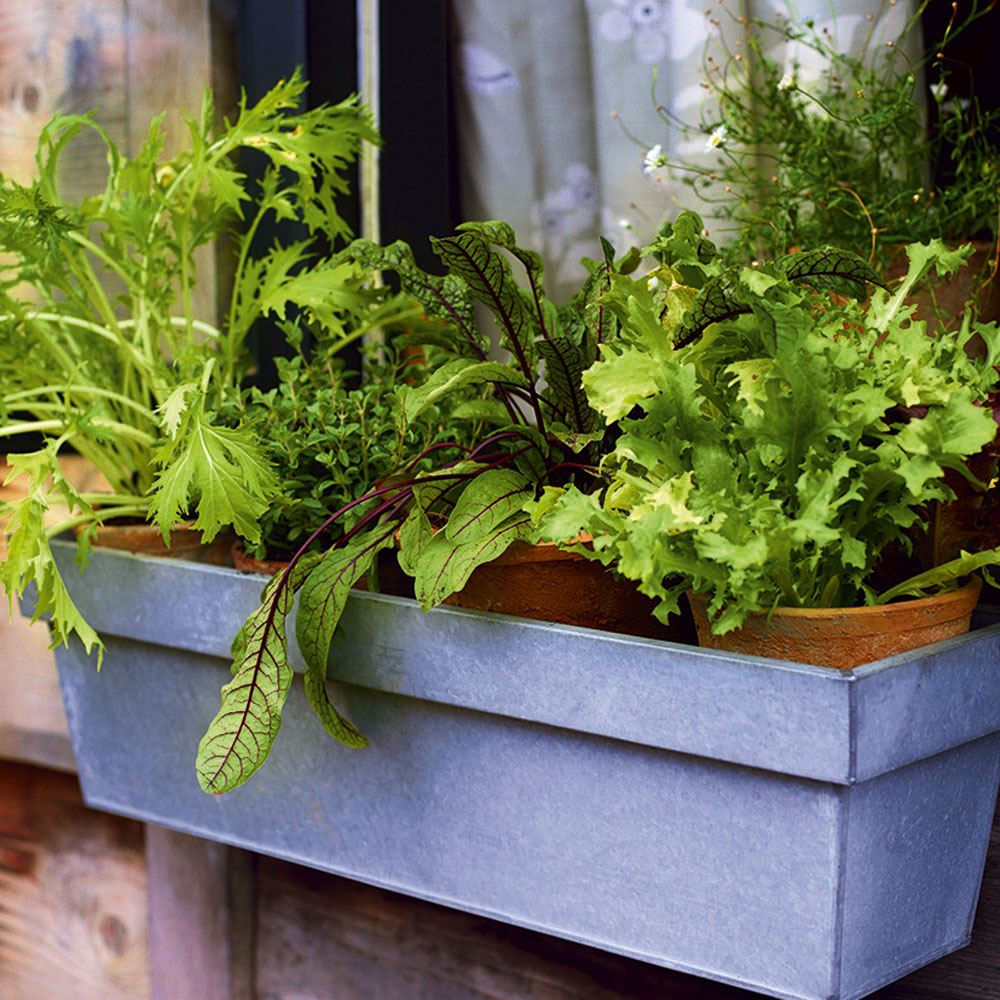
As a rule, though, you'll want to tick off the following steps when planting up your lettuce...
1. Sow your seeds
If you want to sow seeds successfully, you'll want to tailor your efforts depending on when and where you're planting your lettuce.
'Sow seeds into moist compost undercover before the last frost or directly outside after the soil has warmed up in spring,' advises Morris.
To sow seeds indoors:
'If you are sowing indoors fill some pots with a good quality potting mix and sow the seeds on top,' says Craig.
Using compost or vermiculite, you will then want to 'cover the seeds, but not enough to block out all of the light to the seed, and then water them well'.
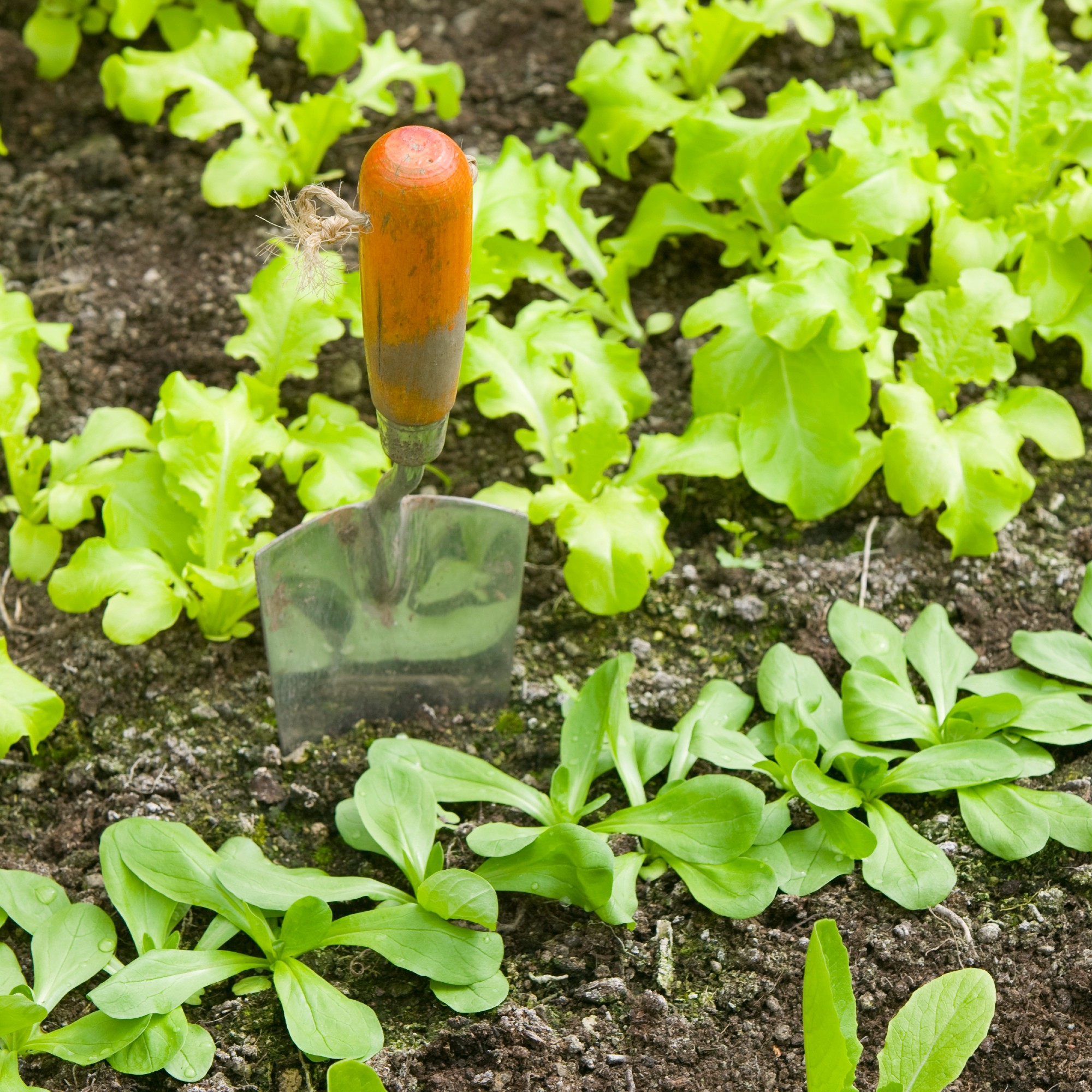
Morris adds that you must make sure to keep the seeds well-watered and in a nice sunny aspect until they germinate.
To sow lettuce seeds outdoors:
If you are planting your lettuce seeds outdoors, Craig says to be sure to sow them 1cm deep in rows, 30cm apart from each other.
'Again, keep them well watered,' he adds.
2. Thin out your seedlings
As your lettuce seedlings become bigger and you are able to handle them, Morris says it's important to 'remove the smaller seedlings making way for the stronger ones to grow'.
'If you are thinning from in situ seedlings, make sure there is at least 10cm between each seedling,' he says, 'and don’t forget to eat the mini seedlings you’ve removed as a garnish on your meals!'
3. Harden off your young lettuces
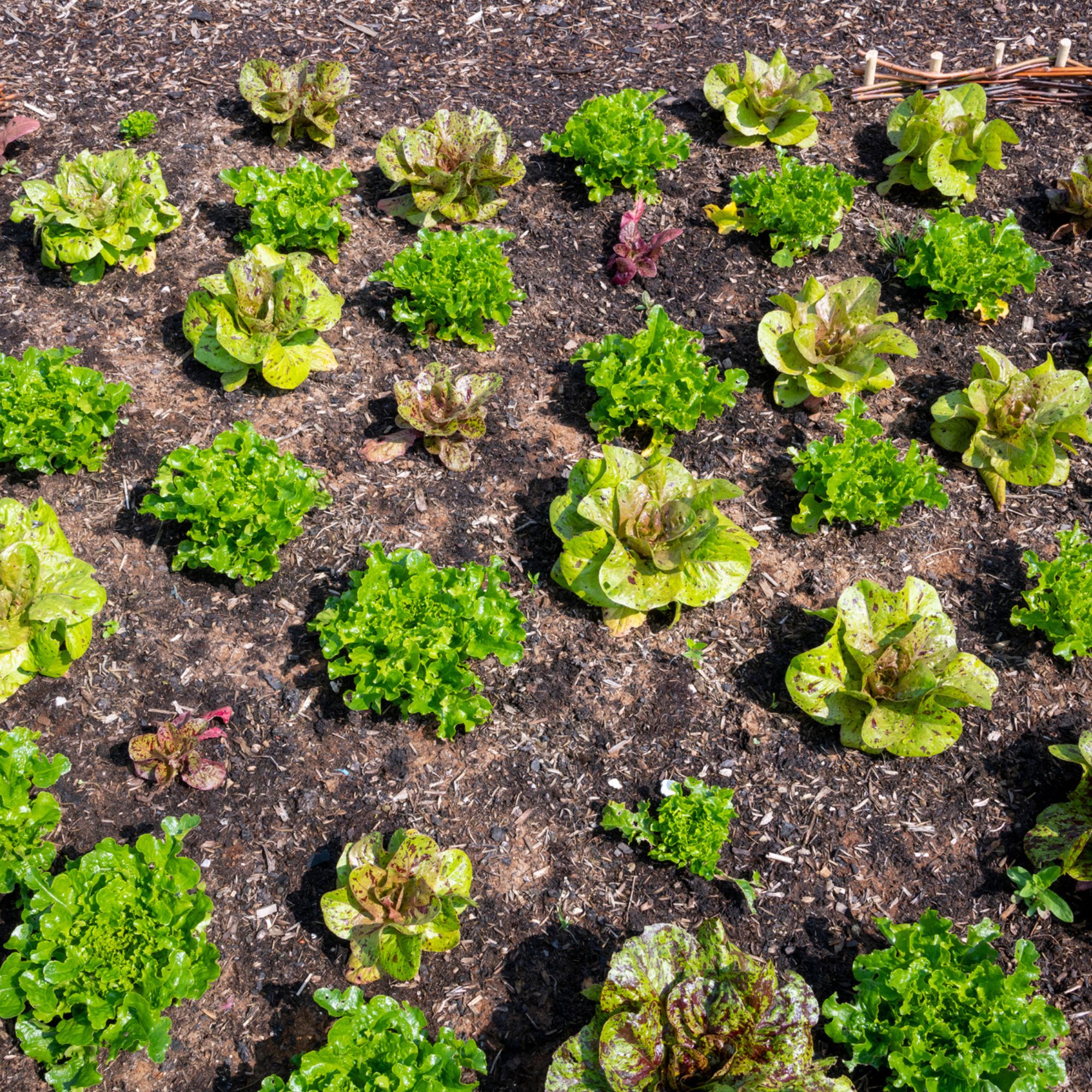
If you've decided to learn how to grow lettuce outside from the get-go, you can flit your eyes downwards to the fifth step on this to-do list. If you've been nurturing those little seedling indoors, though, your next task is simple: getting them out in the fresh air.
'Once all risk of frost has gone and your indoor sown seeds have germinated, it is time to plant them outdoors,' says Craig.
'You will first want to acclimatise your lettuce to the outside temperatures, by placing them outdoors in a sheltered area, and bringing them back indoors at night, for a week or so before planting.'
4. Get transplanting
When it is time to plant your lettuce seedlings outdoors, Craig advises you 'find a warm and sunny planting site, making sure it is thoroughly weeded before you begin planting'.
'You’ll then want to add a good amount of gardening compost and mix this into the soil (or laying it on top of your bed, if you're adopting the no-dig method), firming it down gently, before raking the ground to make it level and ensuring any large stones have been removed.'
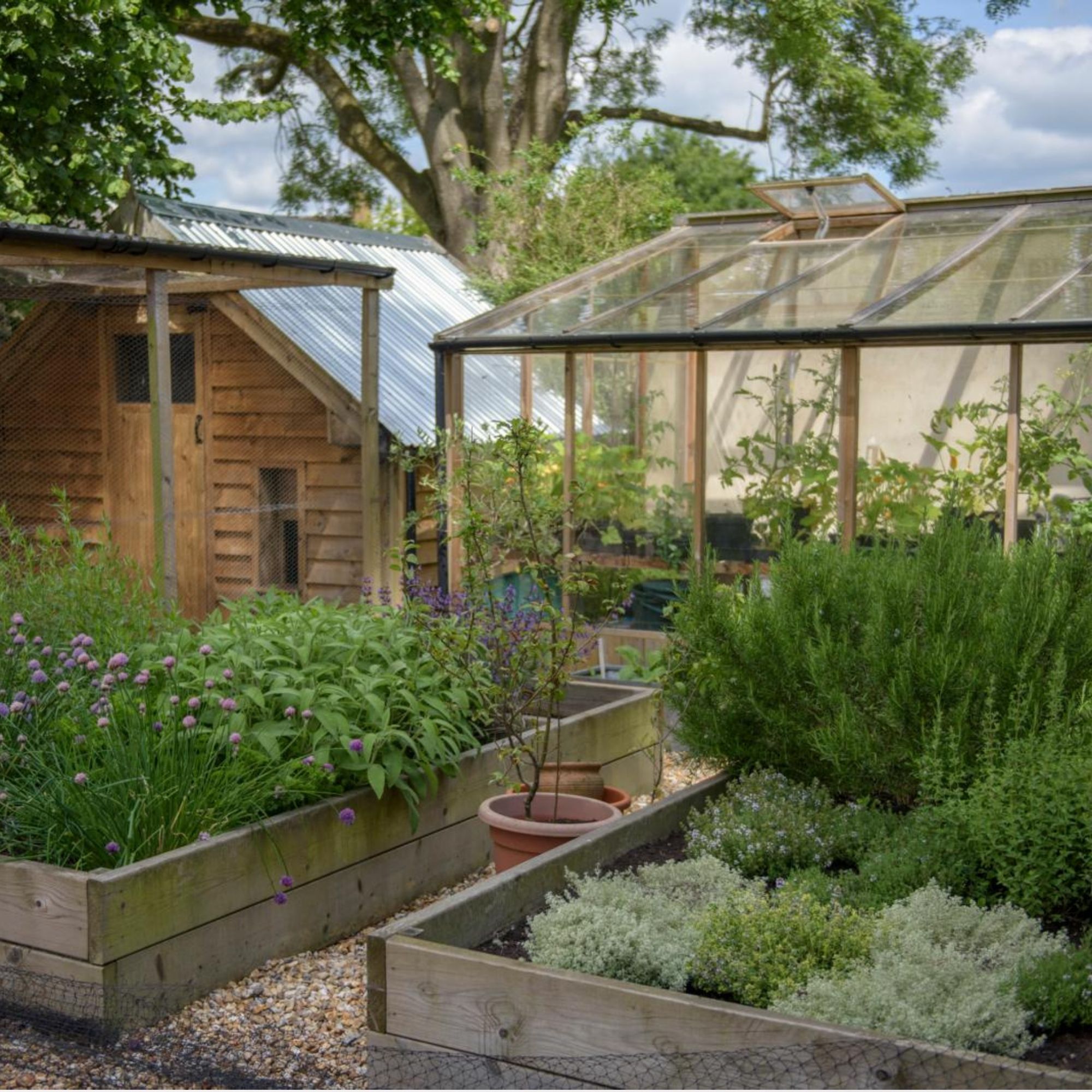
Craig adds that the distance in which you plant your lettuces apart will be dependent on the variety, so it is worth checking the advice on the seed packet.
'Then, dig your hole deep enough that you plant them to the same depth they were in their indoor pots so that the bottom leaves are just above the ground. Push the soil around the base and firm down gently, and voila!'
5. Show them some TLC
Morris says it's important to keep your lettuces moist but not overwatered.
'Mulching with some well rotted organic matter will, too, help nutrients and moisture retention in the soil,' he stresses.
'You’ll also want to protect your lettuce from slugs, snails and some birds by using either chicken wire or fleece! ' urges Craig. 'And another pest to keep on top of is weeds. Make sure your plating site remains free of weeds so that your lettuce does not have to compete for sunlight or water.'
6. Get harvesting
Finally, it's the fun part of learning how to grow lettuce: harvesting your crops!
'For hearting varieties, harvest when a firm heart has formed, cutting through the stem, leaving a stump about 2.5cm tall,' says Craig.
'For loose-leaf varieties, you can harvest when the leaves look large enough to eat. You can either take a few leaves at a time by cutting along the row or cut the top growth all in one go, leaving a short stem for regrowth.'
FAQs
What is the best month to plant lettuce?
'Your ideal harvest time will dictate when you should plant your lettuce,' says Craig.
'If you want to harvest your lettuce in Summer or Autumn, sow your seeds outdoors from late March to July, or sow indoors in early February and plant outdoors in early March.'
He adds that, for a Winter harvest, you should 'sow lettuce outdoors in early August. And for a Spring harvest, sow a Winter lettuce variety between September and October in either an unheated greenhouse or in mild areas of your garden.'
How long does a lettuce take to grow?
'Most lettuce varieties can be harvested from 6 weeks after sowing but some such as hearting lettuce might take up to 12 weeks, so it’s important to think about successional sowing to ensure you have harvests for as long as possible,' says Morris.
'This means sowing some every two to three weeks from March through to July.'
Now that you know how to grow lettuce, the world is your oyster... or should that be salad? Just be sure to protect your tasty leaves from hungry pests, and you're guaranteed a bumper crop of deliciousness in no time.







